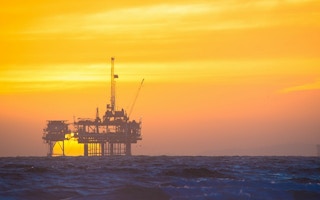At Triodos we have been involved in renewable energy since the 1980s and in emerging markets since the 1990s. Currently one of the top priorities for us is the combination of the two: renewable energy in emerging markets.
Not only within Triodos, but also in the world around us, we see an increasing awareness of the importance of renewable energy to address some of the major challenges the world faces today. For instance, energy plays a big role in the UN Sustainable Development Goals (SDG’s).
Naturally in the two SDGs directly elated to energy – namely access to clean and affordable energy (SGD 7) and climate action (SDG 13).
But energy also has an indirect impact on several other SDGs, from the role it plays in reducing poverty (SDG 1) through advancements in health (SDG 3), education (SDG 4) and economic growth (SDG 8), to striving for equality (SDG 10).
Demand for energy
To give some context to the importance of the use of clean energy in emerging markets, around the world electricity capacity (GW) is forecasted to almost double from 2013 to 2030. There are 3 renewable technologies that will contribute most to the global capacity additions over this period: small-scale solar PV, wind and utility-scale PV. As the figure below shows, the increase in energy demand is expected to occur mainly in emerging markets.

Due to this rising demand, emerging markets will need to significantly increase their energy supply. Two-thirds of all new global energy capacity additions over the next 15 years are projected in non-OECD countries.
Renewable energy is projected to play a major role in meeting the energy needs of developing countries in the coming decades, as most emerging markets are rich in resources for wind, solar, and hydro power. Geographically most of the growth in generating capacity will centre on Asia Pacific (China and India).
Sub-Saharan Africa will add mainly small-scale solar systems as the technology can enable countries to circumvent the need for a costly and lengthy transmission grid build-out. In Latin America, countries are attracted to renewable sources as a way to diversify away from costly fossil fuel imports.

Actually, in 2015, for the first time more than half the world’s annual investment in clean energy came from emerging markets instead of from wealthier nations. According to Bloomberg New Energy Finance, the world’s power mix will undergo a transformation from fossil fuels to renewables.
Large utility scale wind, solar and other technologies are needed to increase green energy supply quickly and to support industries. At present, two-third of the installed generating capacity depends on fossil fuels. Projections indicate that in 2030 this will change to a system with over half of capacity from zero-emission energy sources.

There will also be a shift from central utility-scale projects to a combination of central, as well as decentralised off-grid/mini-grid projects. Emerging markets can deploy solar, wind, and other renewable technologies to rural areas to solve energy poverty without costly grid infrastructure.
A good large scale example is the usage of wind energy in Costa Rica, a country that has the world record in terms of the number of days a year it can run without using fossil fuels. Traditionally, investors have looked to more central utility-scale projects, but there is now a growing opportunity to invest in small-scale off-grid solar PV senior debt. We have for instance financed M-Kopa, a front runner in off-grid solar combined with storage in East Africa.
“
Renewable energy is projected to play a major role in meeting the energy needs of developing countries in the coming decades, as most emerging markets are rich in resources for wind, solar, and hydro power.
What needs to happen?
What do we need to do in order to make renewable energy in emerging market accessible and by doing so help to combat climate change in order to maintain a livable planet and meet Paris commitments.
First, improve specific policies and the business enabling environment for renewable energy investments. Spurred by the Paris global climate pact, many nations now have national clean energy targets, while three in four have set CO2 emissions reduction goals.
The UN-organized climate talks galvanised countries to act. However, many now lack specific policy mechanisms to achieve their goals. (More information can be found on http://global-climatescope.org/en/summary/)
Second, project developers and risk capital need to get on board. Demand is there, projects are happening, but we need to accelerate!
And thirdly, finance is needed. Senior debt for renewable energy in emerging markets is mostly provided by DFIs and only in some countries by local banks, whereas there is a shortage of (commercial) investment volumes. We need to mobilise more finance from OECD countries and where possible work with local banks, so they develop capacity.
Interesting Impact – Risk – Return for investors
Renewable energy in emerging markets can have a great impact on the climate, as well as other impact goals like health (less smog), more jobs and less (energy) inequality/poverty.
There is a huge opportunity for risk capital to take advantage of this growth market. Our experience and that of the DFIs shows that financing these initiatives is relatively low risk and generates a decent risk return profile.
As such we strongly feel that, although renewable energy in emerging markets may still have some challenges, overall it offers an opportunity to actively contribute to realising the SDG’s and by doing so realising significant positive impact while earning a balanced risk-adjusted return.
Jacco Minnaar, Director Energy & Climate Triodos Investment Management. This post is republished from NDCI Global.











